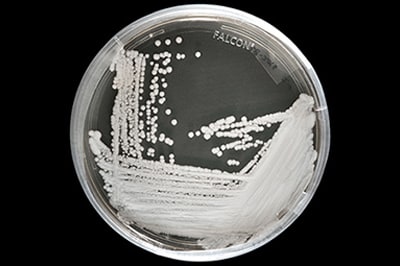
AMD: Combating Healthcare-associated Infections and Antimicrobial-resistant Microbes
Combating Antibiotic Resistance
Antibiotic resistance (AR) occurs when bacteria develop the ability to defeat the drugs designed to kill them. That means the germs continue to grow and develop resistance. AR has the potential to impact all Americans at every stage of life, as well as the healthcare, veterinary, and agricultural industries, making it one of the world’s most urgent public health problems. Predicting how pathogens will become resistant is a challenge. However, AMD technologies help CDC scientists study existing and emerging antibiotic-resistant organisms, including some of the biggest threats, like Clostridium difficile (C. diff), carbapenem-resistant Enterobacteriaceae (CRE), the fungus Candida auris, Mycobacterium tuberculosis, and Neisseria gonorrhoeae. By adding AMD technologies to antibiotic resistance surveillance, scientists can look more deeply at these germs and help healthcare providers select the most effective medications to treat infections.
Discovering Dangerous Fungus in U.S. Hospitals
In 2016, CDC alerted U.S. hospitals and clinicians to be on the lookout for a dangerous multidrug-resistant fungus, Candida auris. It was not long before CDC scientists detected C. auris infections in patient samples shared from laboratories around the nation. Furthermore, AMD technology revealed C. auris strains were closely related to each other, which helped investigators understand how the fungus was spreading in healthcare settings. With the help of AMD technology, CDC scientists are discovering which antifungal medications are most effective against C. auris and tracking how it spreads in healthcare facilities. AMD plays a role in helping CDC scientists devise ways to detect, control, and stop the spread of this potentially deadly pathogen.
Preventing Healthcare-associated Infections
Healthcare facilities are battling to protect their patients from healthcare-associated infections (HAIs), including those caused by antibiotic-resistant organisms, and prevent their spread. CRE, a germ that usually strikes patients in healthcare settings, has become resistant to all or nearly all the antibiotics we have today. These “nightmare bacteria” can also can spread their resistance to other bacterial species. Using AMD, CDC scientists are studying the building blocks of genetic material for CRE and other threats to better understand how these bacteria spread to and share resistance with other bacteria. Improving our ability to detect and identify characteristics of these bacteria will help determine how specific interventions would be successful in stopping their spread and help healthcare facilities prevent infections.
Tracking and Stopping Resistance Genes
The mcr-1 gene hitches a ride on a plasmid, a small piece of DNA that is able to move from one bacterium to another. This gene has the potential to spread to other bacteria, making them resistant to colistin, a last-resort antibiotic for some multidrug-resistant infections. One of the most striking impacts AMD technology has had on outbreak investigations is in the ability to not only detect plasmid-mediated outbreaks that can span many bacterial species, but also detect simultaneous outbreaks caused by multiple plasmids carrying the same resistance gene. As a result, CDC now recognizes two types of HAI outbreaks: “classic” outbreaks due to a single pathogen, and newly-recognized outbreaks due to a plasmid spreading antibiotic resistance across multiple pathogens. With AMD technologies, CDC is tracking these outbreaks faster and stopping them sooner.























.jpg)










No hay comentarios:
Publicar un comentario